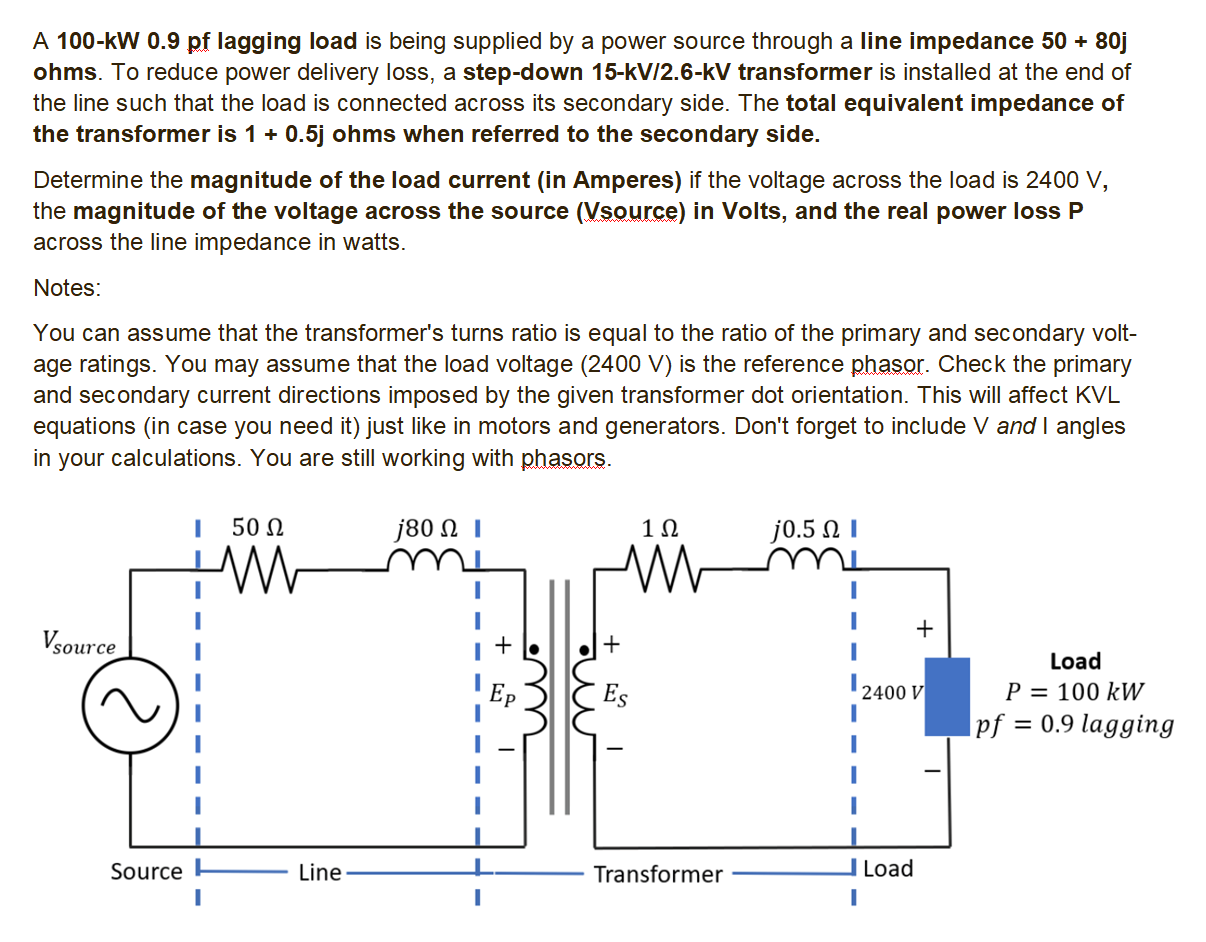Home /
Expert Answers /
Electrical Engineering /
a-100-kw-0-9-pf-lagging-load-is-being-supplied-by-a-power-source-through-a-line-impedance-50-80j-o-pa265
(Solved): A 100-kW 0.9 pf lagging load is being supplied by a power source through a line impedance 50 + 80j o ...
A 100-kW 0.9 pf lagging load is being supplied by a power source through a line impedance 50 + 80j ohms. To reduce power delivery loss, a step-down 15-kV/2.6-kV transformer is installed at the end of the line such that the load is connected across its secondary side. The total equivalent impedance of the transformer is 1 + 0.5j ohms when referred to the secondary side. Determine the magnitude of the load current (in Amperes) if the voltage across the load is 2400 V, the magnitude of the voltage across the source (Vsource) in Volts, and the real power loss P across the line impedance in watts.
A \( 100-k W 0.9 \) pf lagging load is being supplied by a power source through a line impedance \( 50+80 j \) ohms. To reduce power delivery loss, a step-down 15-kV/2.6-kV transformer is installed at the end of the line such that the load is connected across its secondary side. The total equivalent impedance of the transformer is \( 1+0.5 \mathrm{j} \) ohms when referred to the secondary side. Determine the magnitude of the load current (in Amperes) if the voltage across the load is \( 2400 \mathrm{~V} \), the magnitude of the voltage across the source (Vsource) in Volts, and the real power loss \( P \) across the line impedance in watts. Notes: You can assume that the transformer's turns ratio is equal to the ratio of the primary and secondary voltage ratings. You may assume that the load voltage \( (2400 \mathrm{~V}) \) is the reference phasor. Check the primary and secondary current directions imposed by the given transformer dot orientation. This will affect KVL equations (in case you need it) just like in motors and generators. Don't forget to include \( \mathrm{V} \) and \( \mathrm{I} \) angles in your calculations. You are still working with phasors.
Expert Answer
To determine the magnitude of t
